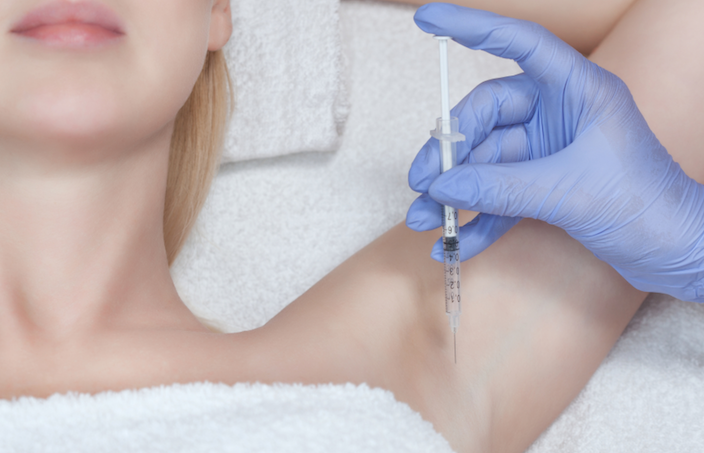The intense heat we are seeing in most parts of Europe this summer may exacerbate symptoms of hyperhidrosis (excessive sweating). 2% of the population are affected and may feel great discomfort in private and social settings. This condition can affect any part of the body but is usually seen in the axillae (axillary hyperhidrosis), palms (palmar hyperhidrosis) and soles (plantar hyperhidrosis).
Fortunately, hyperhidrosis is easily and safely treated with botulinum toxin (Botox) injections. Botulinum toxin provides longer-lasting results than topical treatments while still being minimally invasive.

While excessive sweating can occur in different areas of the body, the common factor is that toxin injections in these areas are almost always painful. Thanks to innovative technological developments, there is a way to treat hyperhidrosis in a more pleasant way. By using thinner needles and robotically assisted syringes like Juvapen, the flow of injection is slow, consistent and perfectly regulated – making the procedure significantly less painful. Patients have shown strongly increased satisfaction compared to a manual injection. With these techniques, bruising and swelling, especially in the axillary zone, have been reduced to a minimum.
How to ?
For treating axillary hyperhidrosis, 50 units of toxin per armpit, subdivided into 25 subdermal injections of 2 units is recommended. For palmar hyperhidrosis a treatment of 50U to 100U is recommended. Depending on the size and extent of plantar hyperhidrosis, approximately 40-60 injections of 80 to 120U is recommended. The onset of effects commences 2-4 days after the treatment, peaking about two weeks after. Effects last between six to eight months.
Sources:
Image: Hagerstown. n.d. What It’s Like to Get Botox for Sweating – Hagerstown. [online] Available at: <https://www.hagerstownderm.com/botox-sweating-hagerstown/> [Accessed 27 July 2022].
Doft, M., Hardy, K. and Ascherman, J., 2012. Treatment of Hyperhidrosis With Botulinum Toxin. Aesthetic Surgery Journal, 32(2), pp.238-244.
Healthline. n.d. Botox for Sweating: How It Works, Cost, Targeted Areas, and Risks. [online] Available at: <https://www.healthline.com/health/botox-for-sweating> [Accessed 25 July 2022].
Scamoni, S., Valdatta, L., Frigo, C., Maggiulli, F. and Cherubino, M., 2012. Treatment of Primary Axillary Hyperhidrosis with Botulinum Toxin Type A: Our Experience in 50 Patients from 2007 to 2010. ISRN Dermatology, 2012, pp.1-5.
Heckmann, M., 2005. Low-Dose Efficacy of Botulinum Toxin A for Axillary Hyperhidrosis. Archives of Dermatology, 141(10), p.1255.